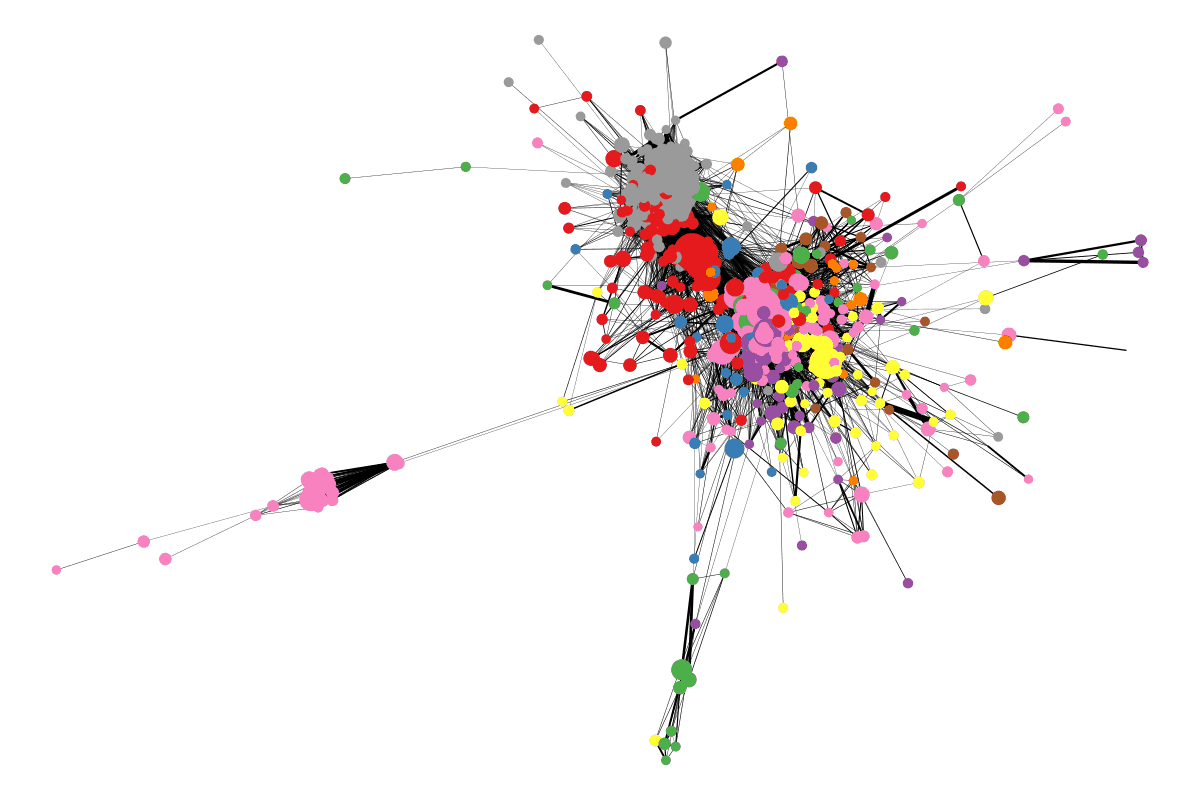Since my last post, I paused a little bit on the visualization of the networks on Meetup.com. Instead, I worked more on reading the literature on group dynamics, social networks, and organizational ecology and finalizing my research questions for my dissertation which this project is part of. The finalized core research question is: what makes a group more likely to be successful in constant competition against other groups for resources and members? In other words, how do groups secure their membership growth and retainment over time? I intend to answer this question by looking at the co-participation network structure both within and across the groups to investigate how the network characteristics and the change of them contribute to the growth and retainment of memberships over time.
After refining and clarifying the research questions, I was able to return to the visualization part of the project and continue making more graphs. With some data cleaning, merging, transformation, and conversion in Python, I was able to create the networks of interest in various time intervals. To share some progress I made during the second half of the fellowship, below are some snapshots on the evolution of the networks of groups in New York City in 2010, 2013, 2016, and 2019. In the graph, each node represents a meetup group. Each color of the node indicate the broad group category the group belongs to, such as tech, socializing etc. (I also have graphs with legends indicating which color represents which category. However, I have 33 categories in the graphs, so I needed to combine some categories before displaying the legend.) The links between the nodes indicate that the two linked nodes have shared group members. The width of the links indicates proportion of shared members relative to the combined membership size of the two groups. Of course, these graphs are far from perfect and I certainly need to work on finalizing them. However, with what I currently have, it is obvious that global network expanding in size and density. This suggests that members participate in multiple groups and that competition for member’s finite time is becoming more and more crucial for a group’s growth and survival. In the future, I will develop ways to visualize how competition in the network affect individual’s participation patterns which shapes group’s recruiting strategies which then impact the competition in the global network.
Below is my brief reflection of my experience at the Studio this summer. Hope you will enjoy watching it!
Qianyi




